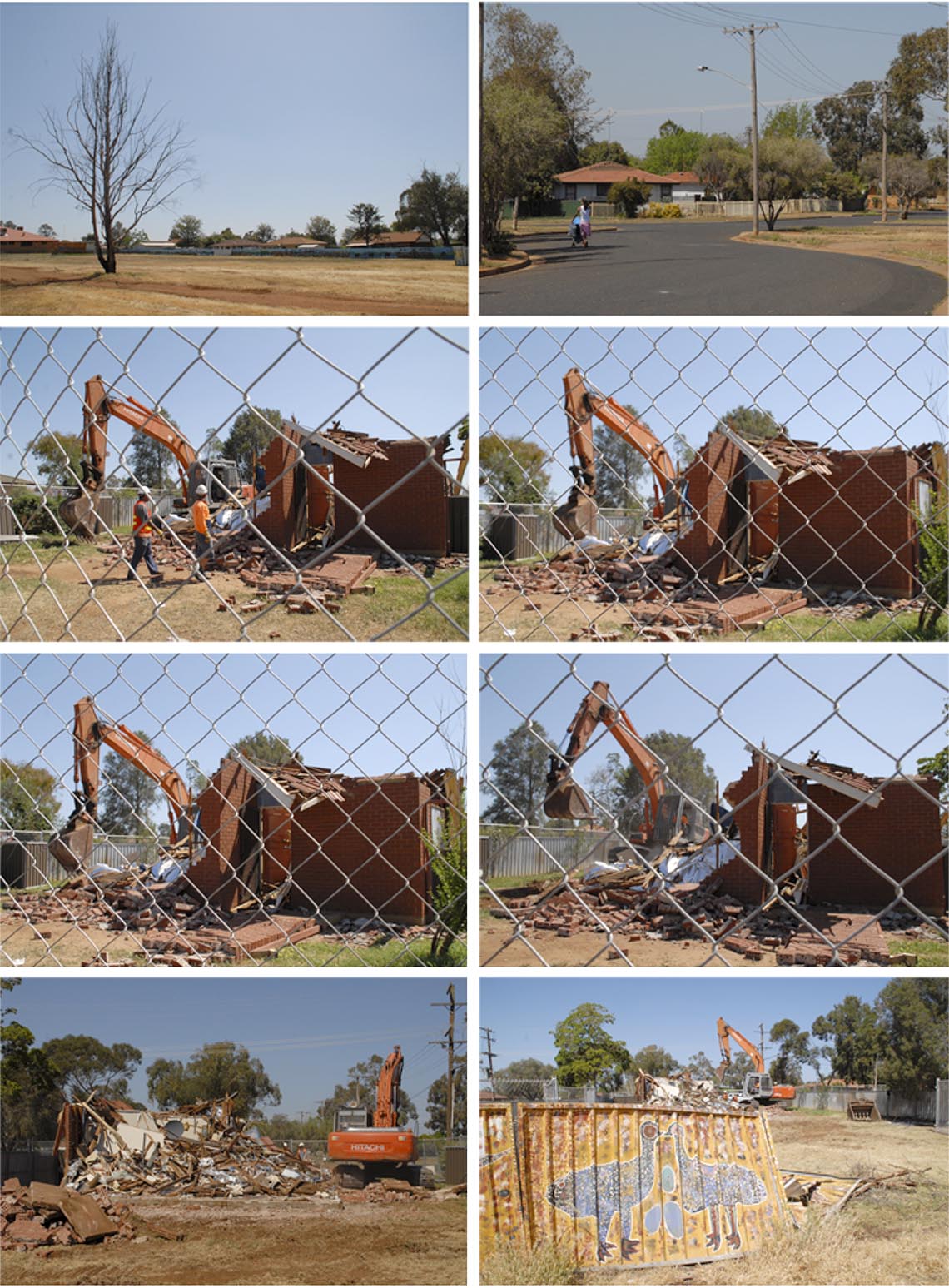Riotous Suburbs, 2007
Artists & writers: Mervyn Bishop, Builders Labourers Federation & Patrick White, Ricardo Felipe, Ruark Lewis, MacDonald & Subritzky, Glen Searle, Therese Sweeney & Lizzie Duguid, Squatspace, Paul Wrigley, Adrian Wills.Curator: Jo Holder. The Cross Art Projects (9 June to 7 July 2007)
View archived exhibition at: http://crossart.com.au/archive/209-riotous-suburbs-curator-jo-holder-9-june-to-7-july-2007
The works in the exhibition Riotous Suburbs fall into two categories: the particular and abstract.
Riotous Suburbs threads arguments about the economics and politics of space, housing, distribution and access even as governments are persuaded to embrace private market proposals for solving housing needs. The artists display the protest and civil unrest that has shadowed a decade of privatisation and great comfort for just some.
The term 'riot' provokes ongoing controversy about what has taken place and why. It lends itself to irony. ‘It was a RIOT!’ is the camped-up title of one history of the 1978 Mardi Gras demonstration Kings Cross.[1] Is the title aiming for better politics or morale boosting? Irony sets up the dialectical interplay.
Big housing estates in Sydney’s inner-city and southwest, such as at Bonnyrigg, Claymore and Minto, are being wholly or partially demolished and sold off. This is called renewal. This policy came to wider notice after moments of ‘public disturbance’ between youths and cops: Redfern in February 2004, Macquarie Fields in March 2005, Gordon Estate in Dubbo on New Year's Eve in 2005. [2] Citing a ‘crisis response’ police shut down entire suburbs. In late 2004 the state seized control of these now key ‘development corridors’ through new state enterprises: the Redfern–Waterloo Authority and the Growth Centres Commission. It is unlikely, however, that middle-class Cronulla will be resumed and sold despite the large-scale race riots in December 2005.
How did this stealthy transfer of ownership start?[3] Villawood was quietly disposed of in 2000 and re-named Hamilton Grove. In late 2001, the Department of Housing started meeting with residents of Minto to discuss their proposals to redevelop the 1000-property estate. DOH didn’t fully disclose their plans or answer questions about relocation, community, tenure and possible affordable purchase, let alone trauma and grief. So Minto Resident Action Group was formed and in turn briefed Redfern/Waterloo residents (who formed REDWatch) and, little by little, attention was focused.[4]
Digital print on archival paper
Size: 90 x 167cm
Adrian Wills, Writer Director
When the Natives Get Restless, 2007
DVD
Duration: 28 minutes
Co-writer + Director: Albert Hartnett
Producer: Melissa Johnston
©2007 Essential Viewing, Melissa Johnston, Adrian Wills & Albert Hartnett.
Film Finance Corporation Australia Limited and the New South Wales Film and Television Office
[2] See Debra Jopson, ‘Battlers and Bulldozers’, Sydney Morning Herald, 19 August 2006 for an excellent history and analysis of housing policy. On the Gordon Estate see articles by Lynton Grace in Dubbo’s Daily Liberal. Historic properties in The Rocks and Millers Point are being secretly sold to private buyers on 99-year leases despite expressions of interest from the community and the co-op housing sector. There are resistance success stories such as Erskineville Estate.
[4] For a Minto timeline see Remembering Minto: Life and Memories of a Community, Remembering Minto Group and ICE, 2007. NSW Department of Housing Minto Estate comprises 3,300 people; Redfern–Waterloo has about 7,000 tenants. Other new DOH policies include targeting only those most ‘in need’ as public tenants and using Federal Centrelink (privatized employment agency) rent assistance funding which goes to landlords.


